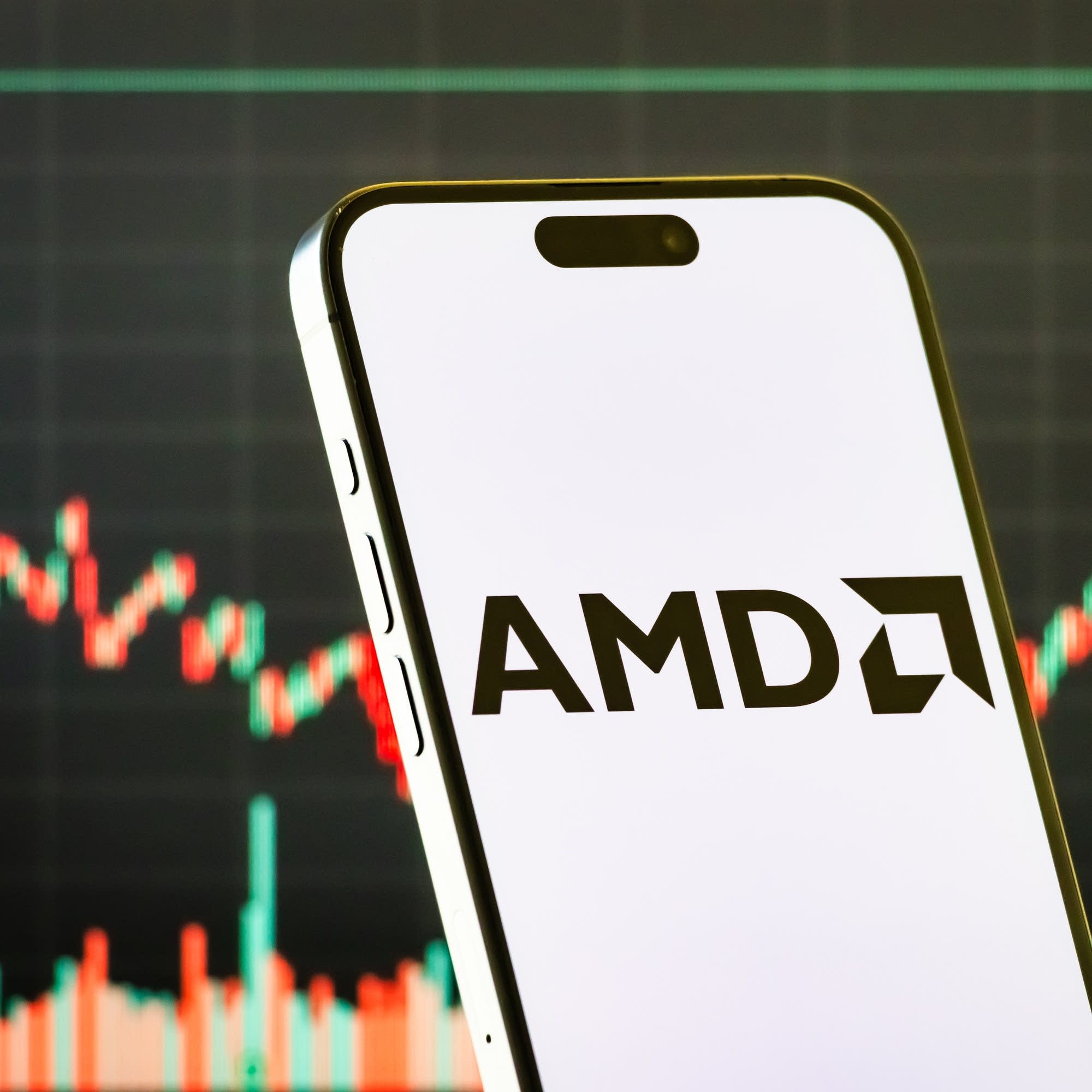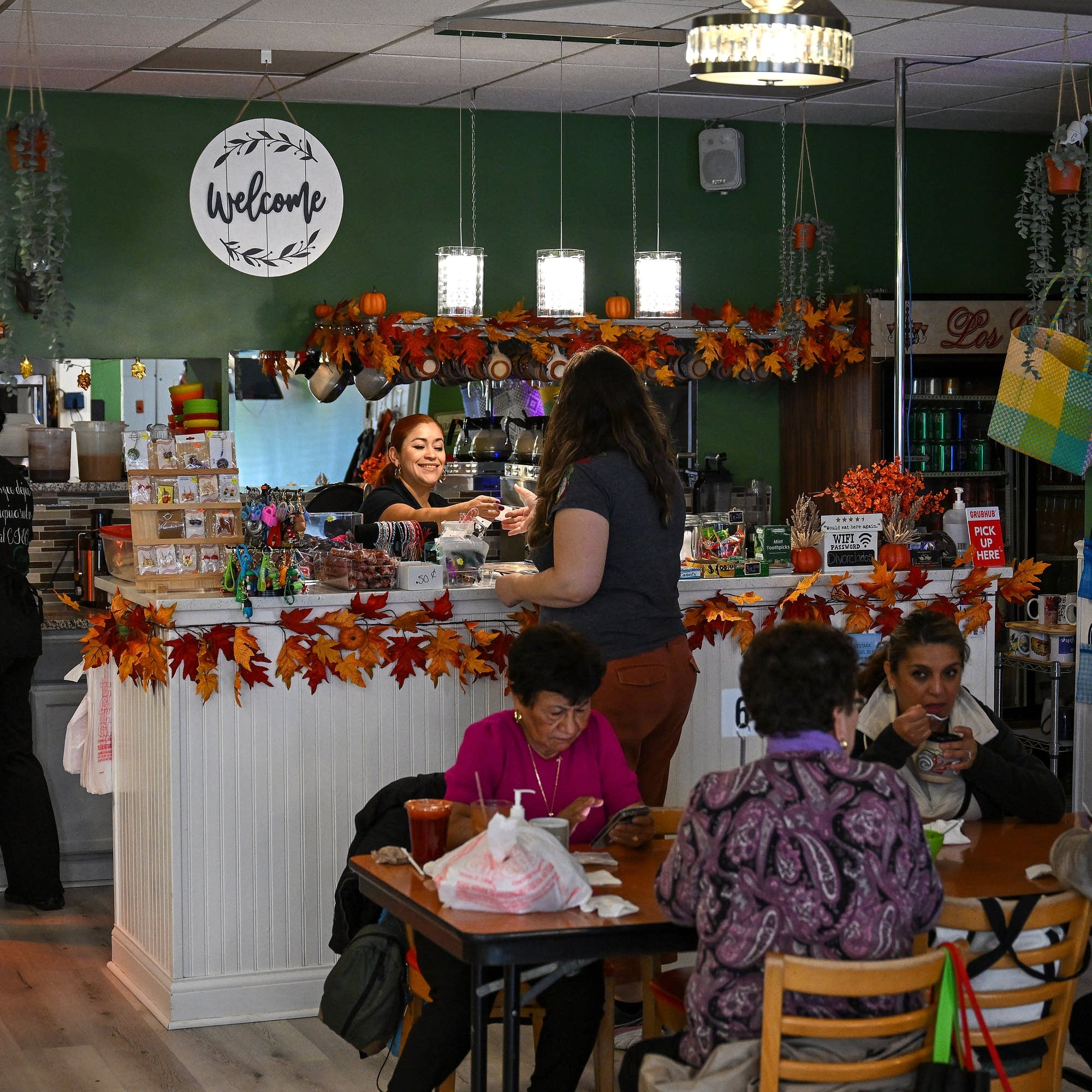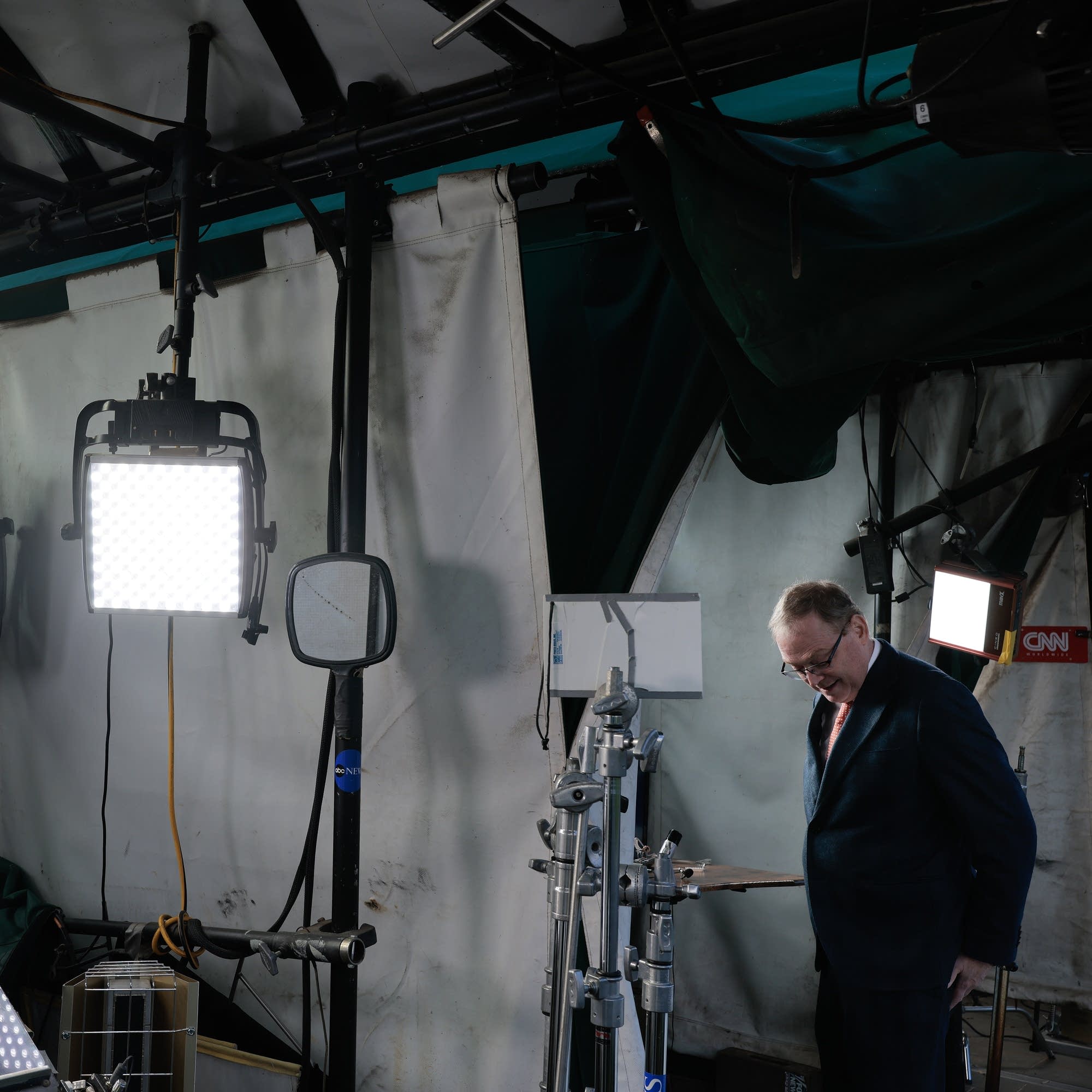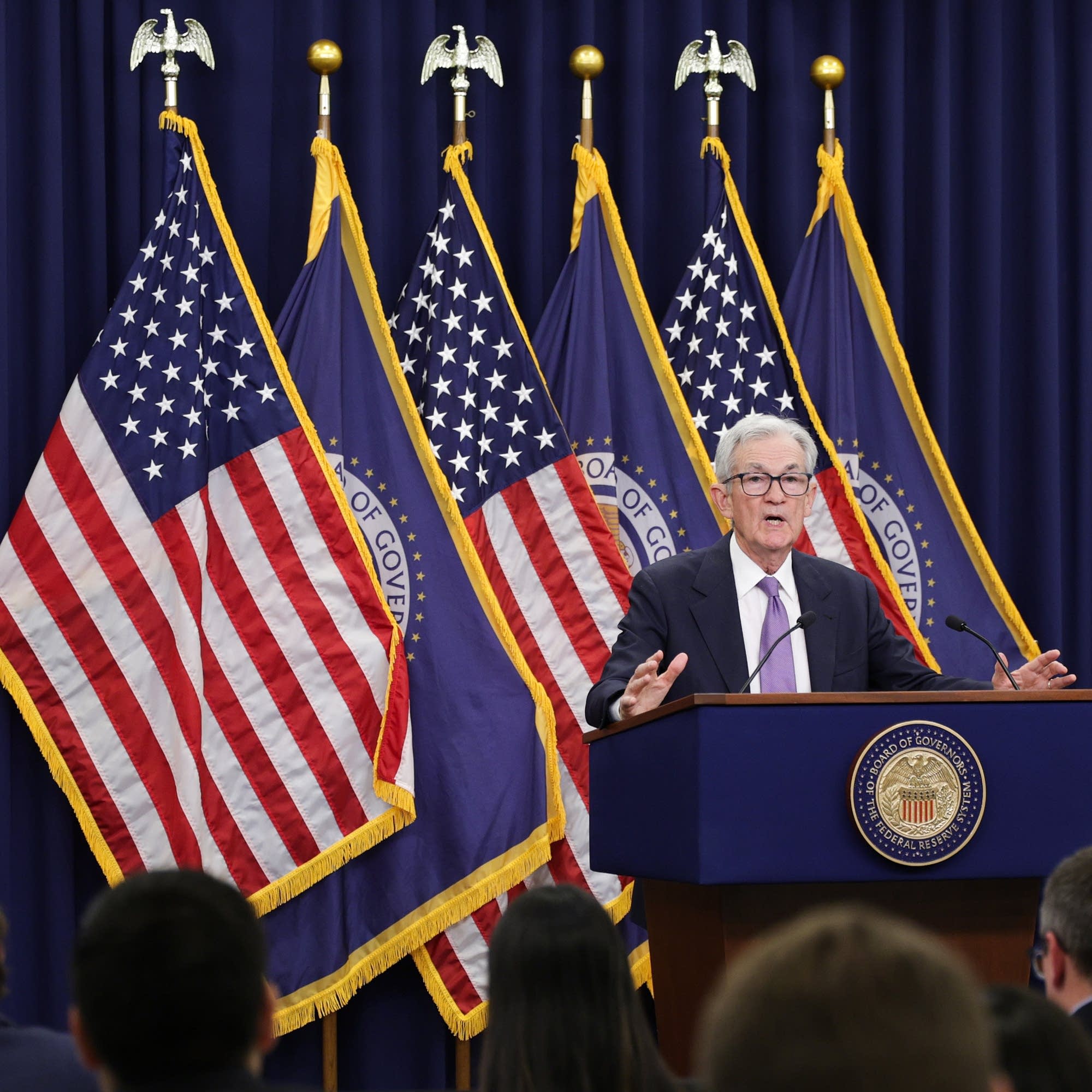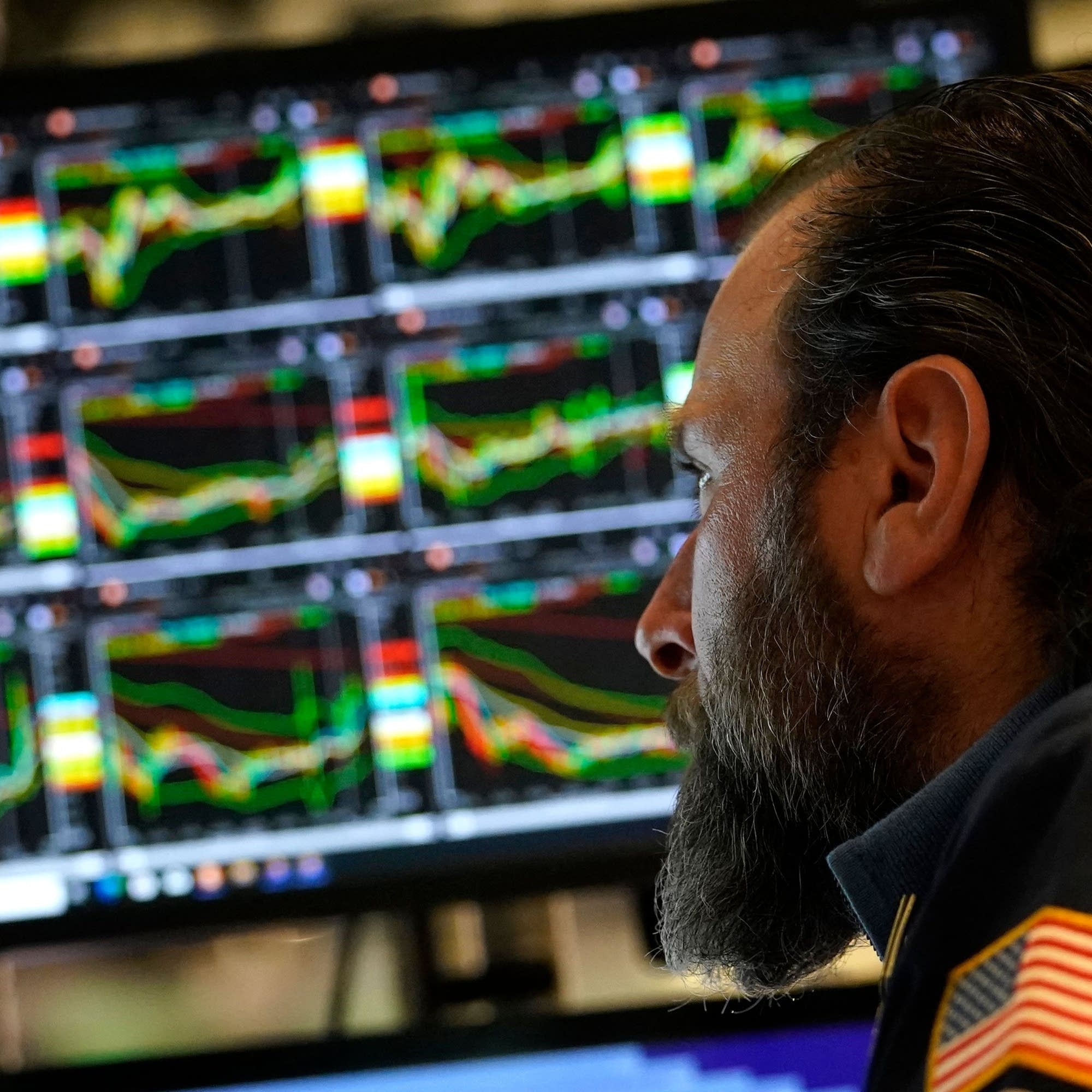Are AI financing loops efficient or alarming?
OpenAI announced it will invest big time in chipmaker AMD, potentially in exchange for a stake in the firm. As AI investment has ramped up, similar deals have become common. Do these partnerships signal a strengthening sector? Or are they a symptom of an AI bubble headed toward a burst? Also in this episode: Regional banks merge under Trump appointees’ relaxed regulatory rule, retailers are optimistic about the upcoming holiday shopping season, and Houston’s housing market experiences knock-on effects of deportation duress.
Every story has an economic angle. Want some in your inbox? Subscribe to our daily or weekly newsletter.
Marketplace is more than a radio show. Check out our original reporting and financial literacy content at marketplace.org — and consider making an investment in our future.
Press play and read along
Transcript
Introducing your new Dell PC with the Intel Core Ultra Processor. It helps you handle a lot even when your holiday to-do list gets to be a lot.
Like organizing your holiday shopping and searching for great holiday deals and customer questions and customers requesting custom things, plus planning the perfect holiday dinner for vegans, vegetarians, pescatarians, and Uncle Mike's carnivore diet.
Luckily, you can get a PC with all-day battery life to help you get it all done. That's the power of a Dell PC with Intel inside, backed by Dell's Price Match Guarantee.
Get yours today at dell.com/slash holiday. Terms and conditions apply.
See Dell.com for details. This podcast is supported by Odo.
Some say Odoo business management software is like fertilizer for businesses because the simple, efficient software promotes growth.
Others say Odo is like a magic beanstalk because it scales with you and is magically affordable.
And some describe Odoo's programs for manufacturing, accounting, and more as building blocks for creating a custom software suite. So Odoo is fertilizer, magic beanstock building blocks for business.
Odoo, exactly what businesses need. Sign up at odoo.com.
That's odoo.com.
On the show today, we've got investments in AI, consolidation in the banking industry, and a trip to the fridge for a cold, creamy stick of butter. From American Public Media, this is Marketplace.
In New York, I'm Kristen Schwab in for Chi RizDahl. It's Monday, October 6th.
Thanks for joining me. The federal government may be still at a standstill.
It's day six of the shutdown.
But corporate America keeps churning. This morning, OpenAI, the maker of ChatGPT, and Advanced Micro Devices, a maker of chips, announced a major partnership.
OpenAI says it'll start using AMD's chips to power AI data center infrastructure in coming years, and the arrangement allows OpenAI to take a 10% stake in AMD.
It's just the latest in a spree of massive interlocking investments between major players in the AI industry.
A ring of deals that has some investors excited and others worried about the risk of a bubble. Marketplace's Megan McCarty Carino explains.
Okay, see if you can follow this. So, OpenAI is investing in chips from AMD.
Meanwhile, chipmaker Nvidia said it's investing $100 billion in OpenAI, which has reportedly made a deal with with Oracle for $300 billion worth of cloud services, which Oracle will build with chips from Nvidia.
So it's just a few players who are really making these circular transactions with each other.
Doug O'Laughlin at Semi-Analysis says these companies are making a big bet together that collaborating on a massive AI build out will bring massive returns for all.
Let's just say when you're spending this much, odds are you have to pull in a lot of partners.
And I think they're really connected and, you know, interlinked with their closest partners so that their partners have a vested interest in them seceding.
This kind of spending concentration is somewhat inevitable, says Daniel Newman at the Futurum Group.
Only a small number of companies have the capacity to build out AI, so it makes sense for them to leverage each other to grow. The dollars come all the way back around.
The investments come in and then the compute is consumed and then it's distributed and then the chips are built and basically it's very efficient.
But that virtuous cycle could easily turn vicious if the demand for AI isn't as strong as the industry hopes, says tech critic Ed Zittron of the Better Offline podcast.
You're effectively saying, hey, May, I will sell this to you, but I will also be the creditor that provides you with the money to buy this from me. It's handing money to yourself.
He says the interlinked financing arrangements are starting to resemble the wireless infrastructure bubble of 2001. What happens if that stuff isn't real?
There's not enough money to pay for any of this. It's funny money.
Investors, though, seem to be taking these AI investments seriously, at least for now.
Stock goes up every time a new one gets announced. I'm Megan McCarty-Carino for Marketplace.
Wall Street today got a boost from that big AI deal. We'll have the details when we do the numbers.
The Cincinnati-based regional bank, Fifth Third, announced today that it will acquire Dallas-based regional bank, Comerica, for nearly $11 billion.
If regulators approve the deal, Fifth Third will become the ninth largest bank in the U.S. with nearly $300 billion in assets.
Not all that long ago, regional bank mergers were a sign of desperation.
Remember the Silicon Valley Bank fiasco in 2023 when First Citizens swooped in to buy its remnants?
And how the same thing happened just a couple months later with JPMorgan Chase buying First Republic?
Well, as Marketplace's Matt Levin reports, consolidation in the banking industry means something different this time around.
Part of the reason everyone was so worried about regional banks a couple couple years ago, they're a big source of lending for office buildings.
But though still empty cubicles haven't become the financial contagion many feared, Kevin Fagan is an economist at Moody's Analytics. Banks have done a fairly good job of deleveraging,
meaning if they had really heavy exposure to the asset class, they've lightened that up or they've increased their reserves.
So unlike the emergency shotgun mergers we saw in 2023, the spate of regional banking banking marriages announced this year, 5th, 3rd in Comerica, PNC and First Bank, Pinnacle and Synovis, more about who's in charge of officiating those mergers.
Cornelius Hurley is a lecturer at Boston University Law School. The most telling thing is that there's a new sheriff in town when it comes to consolidation in this industry.
And it's much more liberal,
if you can apply the word liberal to the Trump administration. Hurley says Trump's regulatory appointees have signaled a more permissive stance on bank mergers than the Biden administration.
Now, you might think two regional banks combining different depositor bases would minimize the chance of a bank run.
Remember, part of what sunk Silicon Valley Bank was too many customers from the same industry, tech. But Gregor Matvos at Northwestern's Kellogg School of Business says bigger isn't necessarily safer.
Whenever things tend to grow quickly in finance,
we worry about bad things happening because they tend to happen.
And there's, you know, what is very quick growth? A lot of big mergers are quickly growing things.
Matfo says a slowing economy can make regional banks' balance sheets much more vulnerable than they've been the past couple years. I'm Matt Levin for Marketplace.
In the first half of this year, the immigrant population in the U.S. declined by 1 million people, according to Pew Research.
For reference here, that's equivalent to about the whole city of Jacksonville, Florida. We've talked a lot on this show about how changes to immigration policy is affecting families and businesses.
It is also affecting the real estate industry. Marketplace's Elizabeth Troval reports from Houston, an area that last year saw an immigration boom and is now worried about a housing market bust.
Claire Poff has been working with refugees at apartment complexes here in southwest Houston for 15 years. There's a large immigrant population here.
In front of a gray leasing office, she tells me that even though the U.S.
isn't really resettling refugees anymore, apartment complexes are still calling her, asking if there are any newcomers to fill vacancies. And they're like, why aren't you sending us people?
Like, we have open apartments and we're needing people. Like, they really relied on newcomers to be able to fill their properties.
Case in point, this recent voice message, she plays for me on Speaker.
Hi, Claire. We have seven properties in Houston.
I was just giving you a call if you have any clients to move in.
Hoff lost her job in refugee resettlement earlier this year, but she still checks in on families to see how they're doing.
I have seen ice here, and that I was surprised because it caused a lot of fear with the clients that I've been working with, and they have legal permanent statuses.
After saying bye to POF, I drive to a bunch of other leasing offices nearby to see if they've been affected by immigration policies. A lot of working-class immigrants live around here.
I pass by papusa restaurants, halal grocery stores, and apartment buildings advertising move-in offers.
I'm here at the leasing office at the brick. Once again, I'm here in future resident parking.
I am by the leasing office. This one has gray painted brick.
It doesn't look very occupied, I will say.
There aren't many porch plants or decorations like you normally see outside apartments. So I go inside the leasing office with the gray brick.
The woman inside doesn't want to be recorded, but she does answer my questions.
She did say, especially in the last two months, they've seen a decrease in demand for the apartments, a decrease in occupancy directly connected to immigration raids.
And co-star real estate analyst Itziar Aguirre says, while low-end complexes in Houston have been performing poorly for a while due to ongoing economic stress and inflation, add to the factor the recent situation with the deportation so that they've also noticed that some residents, especially undocumented immigrants, have left apartments due to fears of deportation.
While recently arrived immigrants are more likely to be renters, a smaller, wealthier share of newcomers do buy homes. Realtor Jane Bird works with many international clients in Houston.
We do see a clear downturn in property sales by foreign buyers who live outside of the U.S. today.
Her clients are mostly from Mexico, Canada, China, India, and Europe. I do believe it is due to the immigration policy by the Trump administration is that foreign buyers are hesitant.
They've halted and they really are buying
much less than they were prior to this year. Bird says where she has seen business pick up is clients looking to buy properties abroad.
Before this year, people were buying abroad for lifestyle and financial reasons or retiring, but there's more of a strategic move this year because of the political uncertainty and immigration policy.
She says people are moving away from Texas to Mexico, Belize, and Panama.
So with fewer people coming to Houston from abroad and more people leaving the city because of deportations and other policies, I asked Rice University's Bill King, what happens?
It would be the first time since probably the 80s that Harris County lost population. King says Houston's economy has relied on population growth.
Sales taxes to apartment occupancies to used car sales to all sorts of things will be impacted if we actually have a population drop.
After years of welcoming immigrants, Houston is beginning to grapple with what the downturn in immigration could mean for the housing market and the economy as a whole.
In Houston, I'm Elizabeth Troval for Marketplace.
Coming up. People view this as a little affordable luxury and not some crazy fancy thing.
Luxury has hit hit the butter aisle. But first, let's do the numbers.
The Dow Jones Industrial Average fell 63 points to finish flat at 46,694. The NASDAQ added 161 points, 7 tenths percent, to close at 22,941.
And the SP 500 gained 24 points, a third percent, to end at 6,740. Megan McCarty-Carino reported on the spending deal between OpenAI and AMD that helped drive the NASDAQ higher.
AMD shares rocketed up 23 and 7 tenths percent. Competitor NVIDIA drooped 1 and 1 tenth percent.
Matt Levin had a story about Fifth Third acquiring Chomerica. 5th 3rd shares fell 1 4 10ths percent.
Chamerica blasted upward 13 and 2 thirds percent. Bonds fell, the yield on the 10-year T-note rose to 4.16%.
You're listening to Marketplace.
This podcast is brought to you by LHH, the Global Talent Solutions and Advisory Company. What does work really mean? For many, it's just transactional, functional.
But LHH believes it can be more.
Work isn't just about tasks and deadlines. It's about passion, people, and possibilities.
With the right guidance and vision, incredible things can happen at work.
Finding the perfect hire, nurturing talent, making the ordinary extraordinary. LHH doesn't just find beautiful moments at work.
LHH creates them. Recruitment, development, career transition.
LHH, a beautiful working world. Learn more at LHH.com/slash beautiful.
This marketplace podcast is sponsored by the University of Illinois Geese College of Business.
For many, the next step in their career is an MBA, but finding the time and budget can be a challenge. The University of Illinois Geese College of Business offers their online MBA, the IMBA.
It's fully online, flexible, and delivered at a fraction of the cost of a traditional MBA.
Students get the same world-class Illinois faculty and an interactive global network all designed to fit their lives. To learn more about the Geese IMBA, visit online MBA.illinois.edu.
That's online MBA.illinois.edu.
This Marketplace podcast is supported by Justin Wine. Get the celebration ready with Justin Wine.
Since 1981, Justin has been producing world-class Bordeaux-style wines from Paso Robles on California's Central Coast.
Justin offers curated gift sets, library wines, magnums, and even custom-etched bottles. Visit justinwine.com and enter Market 20 for 20% off your order.
Justin offers the perfect holiday gifts for clients, colleagues, friends, or family. Be sure to check them out at justinwine.com to receive 20% off your order for a limited time.
This is Marketplace. I'm Kristen Schwab.
When I stepped outside for lunch today in New York, it was 80 degrees and sunny, which doesn't really scream October and definitely doesn't scream holiday shopping season.
But it's already started for some, and the thick of it is almost here.
Adobe forecasts consumers will spend more than a quarter billion dollars shopping online this season, about 5% more than they spent last year. Marketplace's Samantha Fields has more.
It's almost the most critical time of the year for retailers. The holiday season is very important to our business.
It's usually about 40% of our revenue.
Matthew Hassett is founder and CEO of Lofty, a wellness company that sells alarm clocks and other sleep-related products, many of which are made in China.
He says it's been a rough year because of all the uncertainty around tariffs. The hardest year for sure, way harder than COVID.
We launched during COVID, and that was relatively smooth.
Comparatively, this has just been touch and go day by day.
But Hassett says he's feeling more solid lately after spending much of the summer diversifying and expanding into markets in Europe and the UK. Things are going well so far.
September was our strongest month of the year. And he's optimistic about the holiday season.
Katie Thomas at the Kearney Consumer Institute says she's expecting a strong holiday shopping season this year too, overall. Consumer sentiment numbers have not been great.
There's been a lot of stress and concern around the economy, but the reality is, in large part, consumers have still been spending.
With inflation creeping up again and concerns about tariffs still looming though, she says shoppers are likely to be looking for deals this year more than ever.
So even though brands may want to not discount as heavily given tariff implications on their margins, but will likely be forced to because they're really competing for that consumer dollar.
To be competitive, Vivek Pandilla at Adobe says it's also critical that businesses figure out how to be visible everywhere, including on social media platforms and in AI search results.
Given everything the consumer is dealing with in the economy, what's really standing out to us is how they're leaning on generative AI platforms to get a sense of better deals, product recommendations, information.
This year, he says, Adobe is expecting the traffic retailers get from AI platforms to grow by 520%.
I'm Samantha Fields for Marketplace.
The average entrepreneur is 35 years old when they start a business, according to the U.S. Chamber of Commerce.
Only 6% of entrepreneurs are younger than that, which makes sense, I guess, because starting a business takes capital and it takes guts.
That brings us to the next installment of our series, My Economy.
Hi, my name is Krish Kamalani. I'm currently a junior at Babson College, opening my Indian fast conjure restaurant, Des Eats.
Basically back home in Puerto Rico I grew up in an Indian household and we would always eat Indian food at the house for lunch dinner that's what I would bring to school because I grew up vegetarian but we realized that being vegetarian especially in Puerto Rico was very difficult because the diet was very meat-based.
Us as a family decided that we would switch up our diet a little bit. And one way we did this was by changing the recipes that we were working with.
Through Through that, I fell in love with cooking. I fell in love with experimenting with new recipes and having my friends try it.
I went to NYU to study finance and food science, and I wanted to float this kind of idea of starting a restaurant of Indian food that was healthy and also customizable, like Chipotle.
They're kind of reluctant about it. They didn't like it because I was a student that had no background, no experience, no industry experience.
And I knew I would be wasting my time if I stayed there.
So I went to Babson College, which would give me this kind of lab to test out my business. When I did my first pop-up, it was basically in the dining hall.
It was put in the back of the kitchen.
People were able to try. I had surveys out for people to give out their feedback.
And obviously, it didn't start at the best. There's always issues I need to deal with.
The butter chicken was coming out pink and not even orange. We had to find out a way to do that.
But every single pop-up we did got better and better.
Babson, in the summer, told me that we're going to go through with this. We want you on campus as a permanent location, we'll sell your food.
What this signifies is, I'll be paid as a salary as if I was the manager of the location.
I will be using that money, obviously, back into the business and investing it because, at the end of the day, the goal is to go to many college campuses, and having some money to back it up will make it easier to expand quicker.
I come from a family of all entrepreneurs, people that came from nothing and built everything that they have around them. And being around that just
built me as a person to want that for myself as well. It's not just a business that I'm stressed to be successful or I guess make money from.
It's something that I'm so die-hard passionate about that I don't see it just as a business. I see it as something that I would have loved to have as a child.
Krish Kemlani, opening his restaurant Dessey Eats at Babson College. We can't do this series without you.
Whether you're a first-time business owner or a serial entrepreneur, write to us about what's happening in your economy at marketplace.org/slash myeconomy.
I've done a lot of reporting recently looking at how consumer spending has remained resilient, in large part because of high earners.
People in the top 10% of incomes accounted for nearly half of consumer spending in the second quarter.
And they're not just spending their money on fancy watches or cars, they're also making serious upgrades when it comes to ordinary, everyday items like butter.
Christina Peterson, a reporter at Bloomberg, recently wrote about this. Christina, welcome to the program.
Thank you so much for having me.
So I guess there really is a luxury version of everything these days. Even butter? What's behind the push?
The folks that I spoke with said this really came from the pandemic when more people started cooking at home. And
having a little something special in your kitchen made that experience feel a little bit more fun.
And so butter is something where for not that much more money, people can sort of elevate their toast and biscuits and general butter eating experience at home.
Okay, but you say not that much more money, but you talk about a butter that costs $60 a pound in your story.
That butter, I think, is in its own category. What makes it so special? That butter comes from a farm in Vermont with a very small number of cows producing the milk that's used to make it.
So it is a very limited supply, largely why its price is so very high.
For the most part, I think people eating fancier butter at home are upgrading a little bit to maybe $7 butter or $10 butter, and in some cases, more expensive butter from France that's been imported.
But I think for the most part, people view this as a little affordable luxury and not some crazy fancy thing.
What else is behind the push for butter? Is it all just about you know a luxury version of a regular regular everyday food?
I think that butter is benefiting from this backlash against processed foods. I think a lot of people are attracted by butter's short ingredients list and a feeling that it's
more of a whole food that doesn't have a long ingredient list. So I find that fascinating how much our cultural attitudes towards butter and different fats has evolved.
Hmm.
And who's buying this stuff?
You know, I think in general, I've heard people describe this as sort of a barbell economy where the higher income households are able to spend more on groceries and lower income consumers are really pinching their pennies.
But I have spoken to people who are looking for bargains in other foods.
Like I talked to a TV producer who is looking for bargains on Greek yogurt, but he will still splurge for kerrygold butter so I think to some extent this is a pretty accessible food still for a lot of people
you know one of the themes in your story is about this sort of treat culture that's emerged and how it has carried over into everyday categories like butter
I guess I'm wondering how
much you're seeing this happening across different categories and why you think this sort of treat culture in everyday purchases has emerged
well my colleague at bloomberg business week dina shanker had a really interesting article out recently about condiments also being an area where people are willing to splurge a little bit and i think that has some of the same rationale you know people are cooking at home more they might be willing to pay ten dollars for an exciting chili crisp that will last a while.
I mean, that's also true with fancier butter. Generally, people don't consume it all in a day.
And I think there's something about spending a little bit more for a product that you will get to enjoy for days, if not weeks, that appeals to people.
So I grew up in a country crock household. I can imagine that
big brown tub in my head, yes.
I'd say probably
there's some kerrygold in my fridge now.
What's your butter of choice?
Well, I will report that I, in the process of reporting this story, I did try a French butter. It's not a super expensive one, but it was really good.
I don't recall its exact name. I think it was the Isang Yi Sam Mer
butter, but I will say it had those little crunch of sea salt crystals in it. And my kids were kind of blown away.
And I think it took us a full month, six weeks, to go through it.
So I think we might try that one again. It did feel worth it to level up a tiny bit.
The special occasion, butter. Christina Peterson is a reporter covering the food industry at Bloomberg.
Christina, thanks for coming on the show. Thank you so much.
This final note on the way out today: RIP to RiteAid. The chain has closed all of its remaining stores after more than 60 years in business.
RiteAid was obviously known for its pharmacy services, but also for its ice cream brand, Thrifty, which had a cult following. The retailer had filed for bankruptcy twice over two years.
Most of the stores have been sold to rivals, CVS, Walgreens, Albertsons, and Kroger.
Amir Babawi, Caitlin Esch, John Gordon, Noah Carr, Amanda Peacher, and Stephanie Seek are the Marketplace editing staff. Kelly Silvera is the news director, and I'm Kristen Schwab.
We'll be back here tomorrow.
This is APM.
I'm Kimberly Adams, host of Make Me Smart, a podcast from Marketplace that makes today make sense. Join me throughout the week as I dig dig into the biggest stories in tech, culture, and the economy.
Whether it's a vibe check on the job market or the latest on China-U.S. relations, Make Me Smart helps you understand how the headlines actually impact your daily life.
Listen to Make Me Smart on your favorite podcast app.
